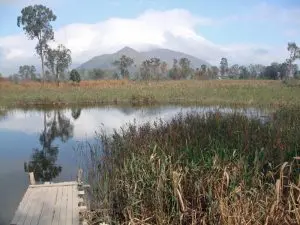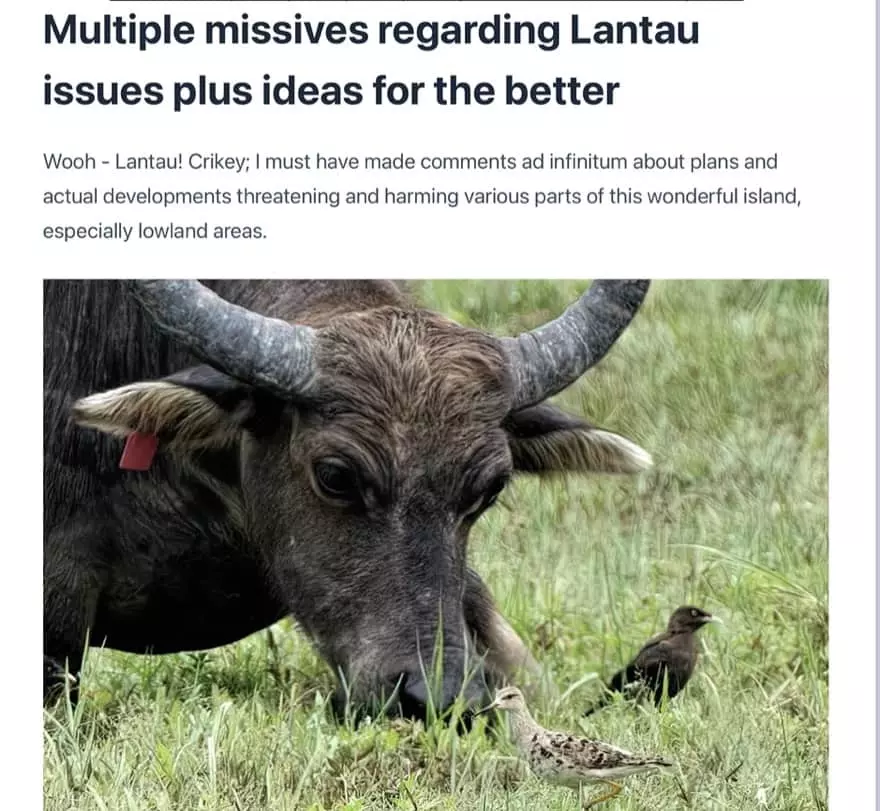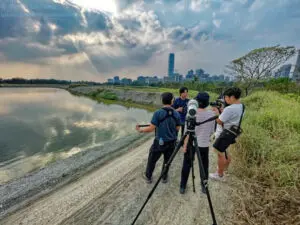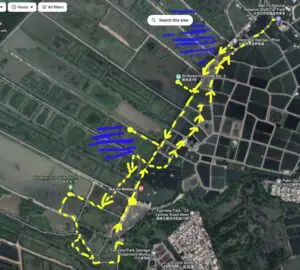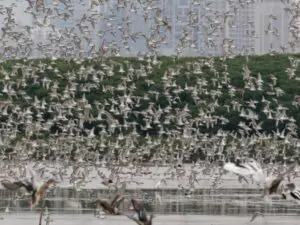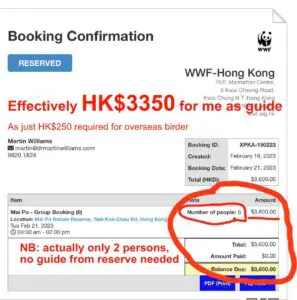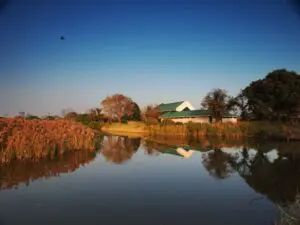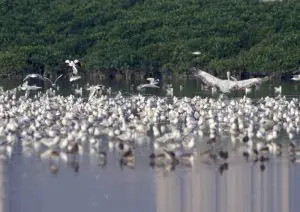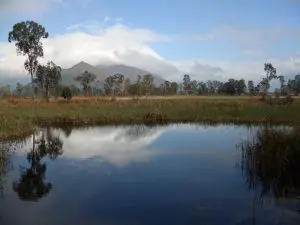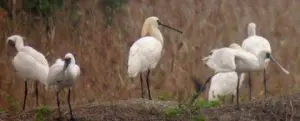A “battle of the ponds” is underway in Hong Kong’s northwest corner. It focuses on Deep Bay, a wetlands area that borders on China, near Shenzhen. Developers who want to build here are tussling with conservationists who want to see the area – and its wildlife – protected.
[Published in the Far Eastern Economic Review, 16 February 1995; though the tale is history as I post this, similar sagas continue playing out in the Deep Bay area – see for instance, Birding and Conservation at Fung Lok Wai Fishponds Near Mai Po on this site.]
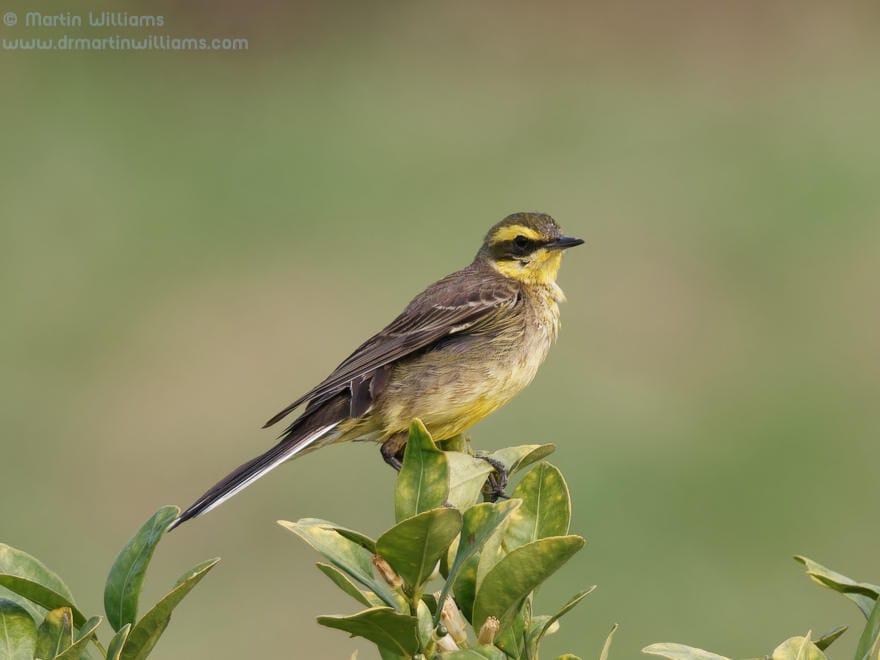
It’s not easy to separate the good guys from the villains in this long-running saga.
In late-night movies, they’d wear white and black; but in this fight, they both wear green. Consider: the would-be developers plan to create nature reserves; a conservation group supported one developer’s plans, then joined an environmental alliance opposing them. Even the wetlands’ name seems designed to confuse: Deep Bay is a shallow estuary (but it makes a deep indentation in the coastline).
Birds that flock to the region have long found respite in Deep Bay’s wetlands. The area includes the Mai Po Marshes – Hong Kong’s only wetland nature reserve – and is home to some of Asia’s rarest birds. They include the Saunders’ gull, Nordmann’s greenshank and the endangered black-faced spoonbill. In fact, Deep Bay is one of only three winter sites for the latter species, hosting about 70 birds each year – about a quarter of the world population.
The bay boasts some of the largest mangrove forests remaining on the south China coast. And it boasts mudflats, reedbeds, lagoons and shrimp ponds – all teeming with creatures on which the birds feed. Landward of Mai Po, and fringing the bay elsewhere, lie fishponds over which the most recent battle has commenced.
Even before the battle, Deep Bay had suffered insults including land reclamation, developments near and along the shoreline and pollution from farms and factories. Despite the repeated blows, the number of waterbirds visiting there has increased in recent years; wetland destruction elsewhere in the region leaves them tew alternatives. Some 23,000 birds visited are for winter feeding in 1984; in winter 1994-95, they numbered almost three times that, 61,800.
But each year, the parcel of land on which they stop to refuel shrinks further as developers’ bulldozers and cranes move in.
The numbers of waterbirds easily qualify Deep Bay for listing under an international treaty known as the Ramsar Convention on Wetlands of International Importance. Though no guarantee of protection, a listing would demonstrate Hong Kong’s intention to ensure the bay’s future. A party to the convention since 1979, Hong Kong has so far postponed listing Deep Bay as its only Ramsar site.
It has, however, set up a working group to consider a Ramsar listing.
While procrastinating over Ramsar, the Hong Kong Government designated two buffer zones that limit further development. One of them, comprising mostly fishponds, is now the focus of a battle.
Sunnyville planned: housing estate with a golf course
Henderson Land heads the Deep Bay developers’ ranks. It has a scheme to transform part of a fishponds area into a housing estate with a golf course, known as Sunnyville. In 1991, the company approached David Melville, then director of conservation, now executive director of the World Wide Fund for Nature Hong Kong (WWF Hong Kong), which manages Mai Po. The developer wanted Melville to help with wildlife surveys and suggest ways that Henderson Land could reach its goals without causing too much damage.
Melville agreed. “I feel there is more to gain by dialogue [with developers] than saying to hell with you,” he explains.
Henderson Land already owned 8 million square feet of land near the fishponds; to complete its plans, it wanted to acquire another 2 million square feet from the Hong Kong Government. The developer promised to create a nature reserve in return for the government land. The reserve would attempt to turn back the clock, restoring coastal fishponds to mangrove and marsh.
Initially, WWF Hong Kong supported Sunnyville, giving its nod at a time when “there was a lot of infilling of ponds for container parks,” Melville says. “It was completely out of control up there, and we believed it was better to allow a scheme with some control.”
The group’s members’ magazine even sported a Henderson Land advertisement with an artist’s impression of an idyllic lagoon. And, WWF commented, this “is potentially the most important conservation initiative in Hong Kong since Mai Po Nature Reserve itself was established.” But in 1994, WWF suddenly shifted its stance. At a Town Planning Appeal Board meeting, it argued that the Sunnyville development should not be permitted.
Melville says the shift arose in part because the outlook for the fishponds now seemed less gloomy: Within the last 12 months, officials had begun to enforce regulations restricting their destruction.
Realisation that fishponds are important for wildlife
The crackdown coincided with the realisation that the fishponds were important to wildlife. Since the 1970s, conservationists had decried the transformation of Deep Bay’s shrimp lagoons and mangroves to steep-sided fishponds. And they had regarded the fishponds as virtually useless for wildlife. But research has shown they are now major feeding grounds for birds such as egrets, and the haunts of otters that are rarely found locally.
Mai Po reserve manager Lew Young, who conducted some of the research, and longtime Hong Kong resident and birdwatcher Clive Viney presented evidence on the ponds’ value to the Town Planning Appeal Board. But even with support from the Agriculture and Fisheries Department and Town Planning Board officials, they were out gunned by a Henderson Land team featuring what they considered to be “one of Hong Kong’s most eloquent [barristers] and a team of top briefing solicitors, plus the private sector’s brightest planning experts and a team of environmental ‘consultants’ from Britain.” Henderson Land’s case was so convincing that it won approval to start work on Sunnyville.
Conservationists now fear the floodgates have been opened. Until the appeal, the second buffer zone had been holding up well: officials had rejected all but one of 27 applications made for 17 different sites over the past four years. But Sunnyville may prove to be a dangerous precedent. Now, at least seven other projects are pending; like Sunnyville, most of them include a nature reserve modelled on Mai Po.
Green alliance highlights the importance of fishponds
But the battle of the ponds didn’t end with the appeal board’s decision. WWF has joined forces with four other groups, including Friends of the Earth. “Mai Po was WWF’s baby,” says Friends of the Earth spokeswoman Lisa Hopkinson. “But we decided the issue is too important, and have written to the governor and the Executive Council, expressing our concern.” To Hopkinson, the Sunnyville case reveals deficiencies in government policy.
And, she suggests, the government is “letting developers lead you by the nose on conservation.”
The green alliance is urging the government to recognise the importance of fishponds, produce a conservation strategy for Deep Bay, and list the bay under the Ramsar Convention. Alliance members have launched a signature campaign to support these aims and are working to raise public awareness of the issues.
They see some hopeful signs.
Following the Sunnyville appeal, the Town Planning Board elected to take the scheme to the High Court for judicial review. It has also drawn up tougher, more detailed guidelines for the buffer zones and recommended the government set up an agency to manage them.
Meanwhile, the Ramsar working group has completed its assignment, and the administration is considering its proposals.
But no one is uncorking the champagne yet. When developers’ pending appeals are heard, they will likely be based on legislation that existed when their plans were first submitted. If they are successful, they may be able to ignore newly introduced, more stringent rules.
Even if the battle of the ponds favours the conservationists [2023: so far, yes in Sunnyville area], more skirmishes and uncertainties lie ahead in the campaign to save Deep Bay.
Regardless of the outcome, one question looms large: If the alliance’s current hopes are realised, will the conservation strategy, the Ramsar listing and fresh legislation survive Hong Kong’s transition to Chinese rule in 1997? [Also so far, yes.]
See also: Nam Sang Wai development plans repeatedly rejected yet resurface in decades-long saga.
Suppose you were ageing and with various ailments, yet still attractive to many; and you were in the care of someone who is doing nothing…
After I posted in a birding whatsapp group about issues with the Long Valley Nature Park, I was surprised at a response, sent to the…
If you’re among the privileged few with access to the inner sanctum of Deep Bay in northwest Hong Kong – a viewing hide at the…
If you’re unfamiliar with the Deep Bay wetland shared by Hong Kong and Shenzhen, you might wonder about the significance of the expanse of fish…
Here’s a film I made about Mai Po, using footage James Reynolds and I shot for the reserve, in English, Cantonese and Mandarin versions: Mai…
Yes, this is may seem impossible, ridiculous; but continuing with current state of affairs doesn’t look good for long term future of Deep Bay wetlands.…
Last decade, the future looked bright for the Deep Bay wetland, in northwest Hong Kong. [I wrote this for the South China Morning Post in late…
The WWF Hong Kong managed Mai Po Marshes Nature Reserve has undergone an infrastructure upgrade, with a HK$347 million grant from the Hong Kong Jockey…
With the apartment blocks of Yuen Long and Tin Shui Wai to the southwest, Fairview Park estate to the south, and the urban sprawl of…
There is a Mai Po upgrade project underway [spring 2023], funded by a HK$347.86 million grant from the Hong Kong Jockey Club Charities Trust. This seems…
“If you look at satellite photos of the Pearl River delta, Deep Bay really shows up. There is nothing else like it.” David Melville Published…
Though Mai Po Marshes is at the heart of Hong Kong’s internationally important Deep Bay wetland, there are other important sites in the area –…
Mai Po is a key component of the internationally important Deep Bay wetland, which straddles the border between northwest Hong Kong and Shenzhen.
Deep Bay in northwest Hong Kong is a wetland of international importance, a magnet for migratory waterbirds.
Mai Po Marshes has become one of the world’s greatest wetland reserves – and a place I’ve come to know well over the years. Indeed,…
Nam Sang Wai is part of the Deep Bay wetland.
At Mai Po Marshes Nature Reserve you can enjoy impressive wildlife spectacles.
Hong Kong Wetland Park is a curious place – with little wetland, excess dryland and an outsize visitor centre with exhibition areas like scifi scenes.…
Despite all the brouhaha, there is no H5N1 at Mai Po.
Mai Po Marshes Nature Reserve is a key part of the internationally important Deep Bay wetland

